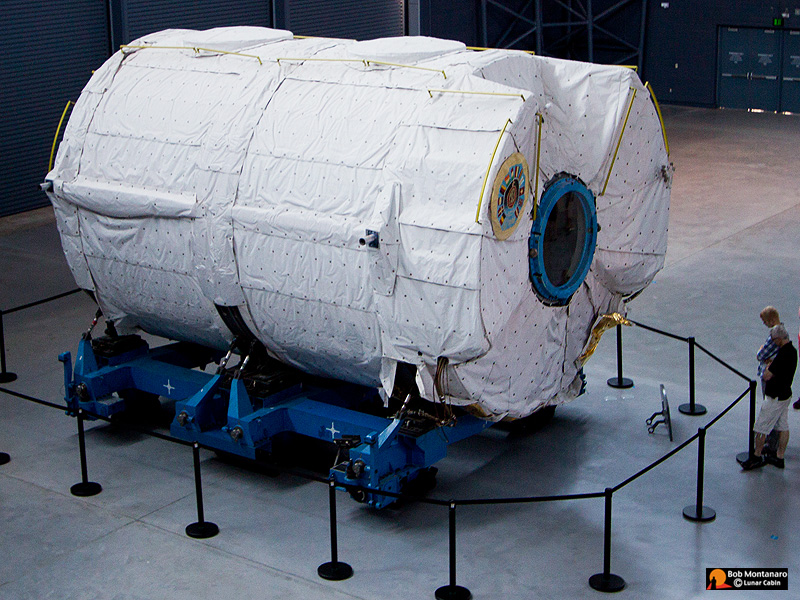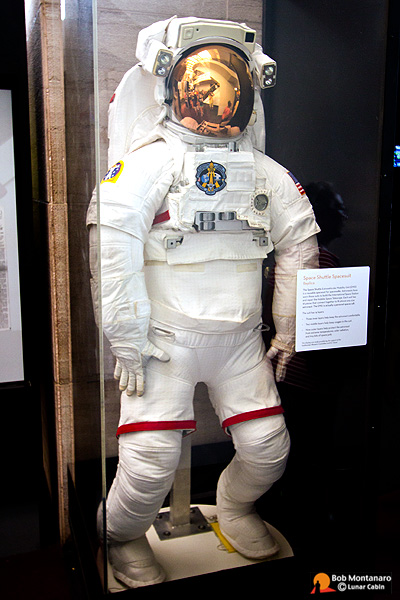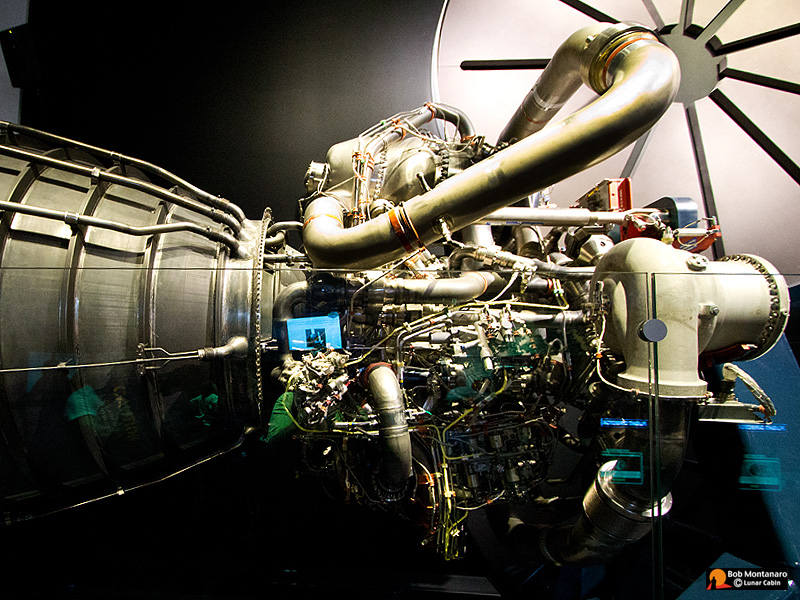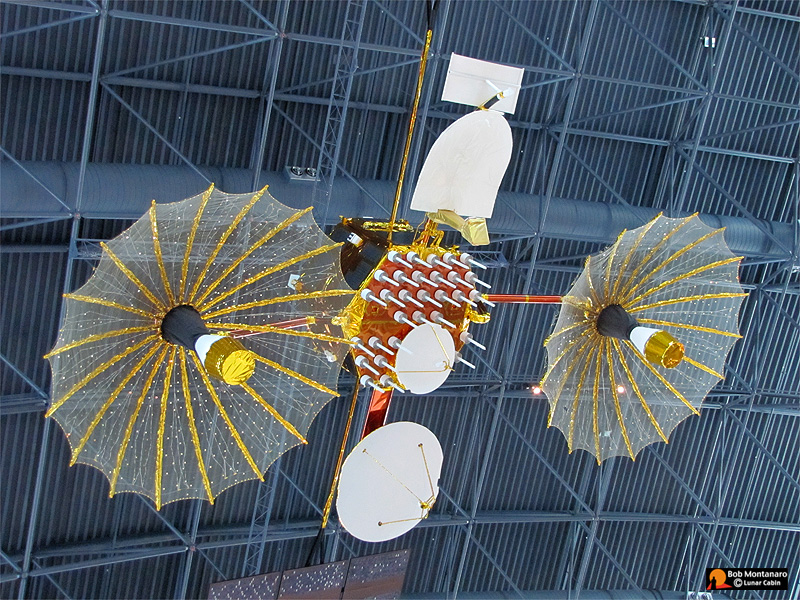 |
|
Space Shuttle Artifacts on display at the Smithsonian's National Air & Space Museum National Mall Building & Udvar-Hazy Center 13, 14 & 16 July 2012 Page One of Two |
|
 |
|
From the display's interpretive panel: Spacelab Laboratory Module - Developed by the European Space Agency, Spacelab was a modular laboratory system installed in the payload bay of the Space Shuttle orbiter. During Spacelab missions in the 1980s and 1990s, the Shuttle served as an intermittent space station for research conducted by scientists and astronauts. The laboratory module, a pressurized cylindrical room connected by a tunnel to the crew cabin, was Spacelab's primary element. It was outfitted with racks containing subsystems, computers, workstations, stowage lockers, supplies, equipment, and experiments that varied from mission to mission. Two laboratory modules were flown on a total of 16 missions from 1983 through 1998. This one, Module #1, was used nine times, first on the Spacelab 1 mission in 1983 and last on the Microgravity Science Laboratory missions in 1997. |
|
 |
 |
LEFT: A bright orange Launch-Entry Suit "....was a partial-pressure suit worn by Space Shuttle astronauts to protect against loss of cabin pressure during ascent and descent. Introduced after the 1986 Challenger accident, it was used until the late 1990s, when the full-pressure Advanced Crew Escape System was phased in." This suit lacks the helmet and was never flown in space. RIGHT: A replica of a Space Shuttle Extravehicular Mobility Unit (EMU) "....is a reusable spacesuit for spacewalks. Astronauts have worn these suits to build the International Space Station and to repair the Hubble Space Telescope. Each suit has 18 pieces that connect together to fit almost any size astronaut. The EMU is actually a personal spacecraft." |
|
 |
|
| Replica of a Space Shuttle Main Engine. | |
 |
|
| Tracking and Data Relay Satellite (TDRS) - a space-based tracking and communication satellite system that replaces ground-based tracking and communication stations. | |
All contents copyright Lunar Cabin |
|